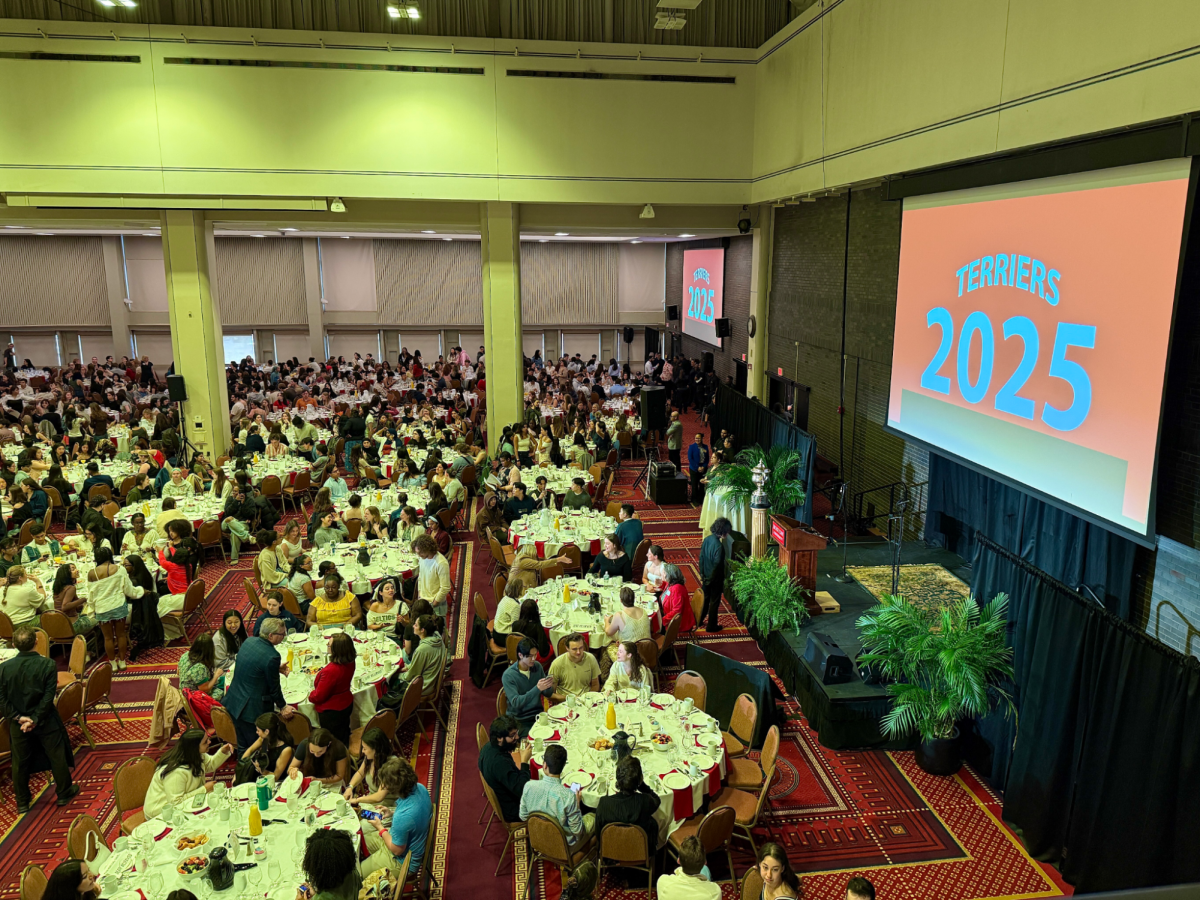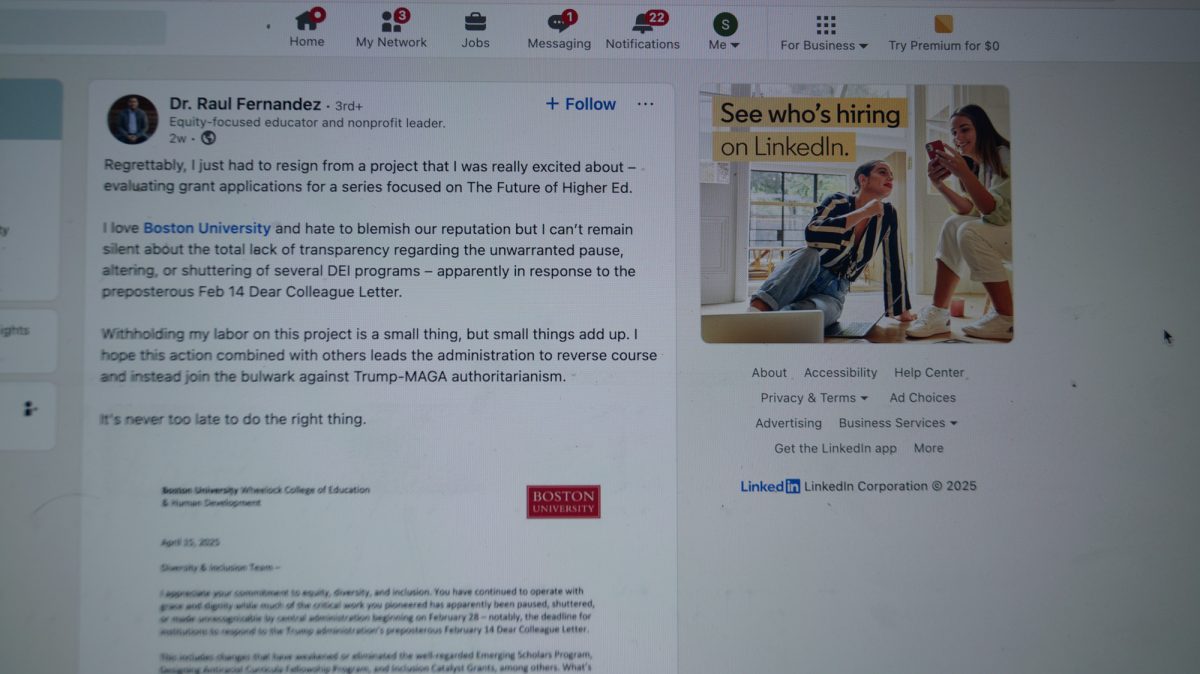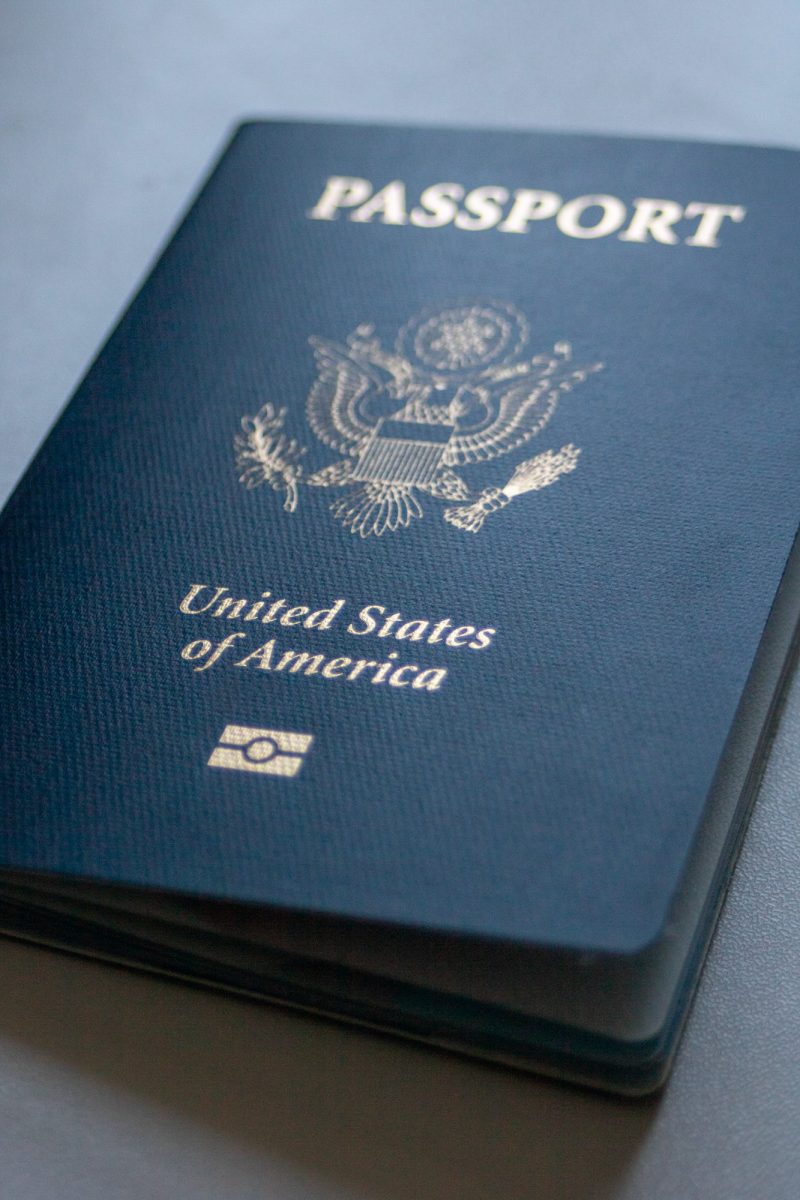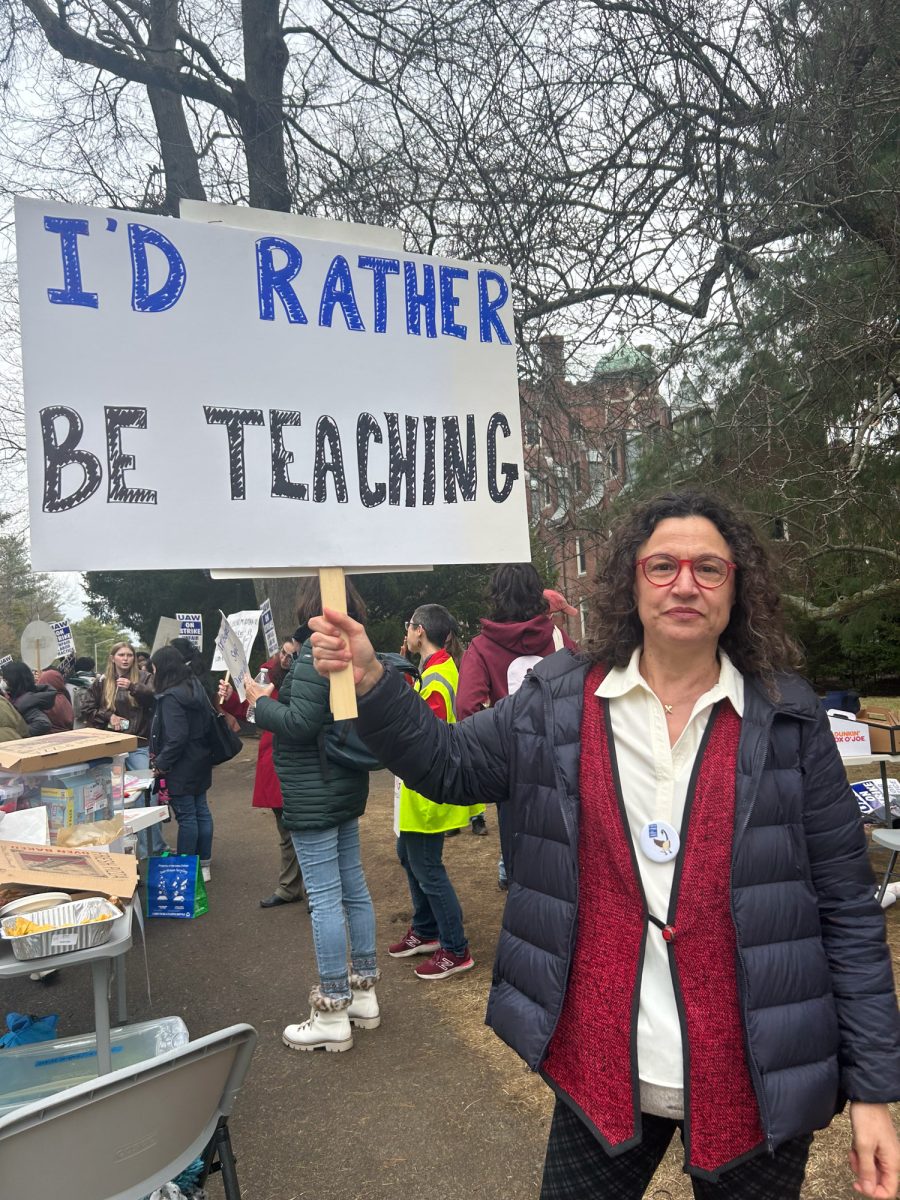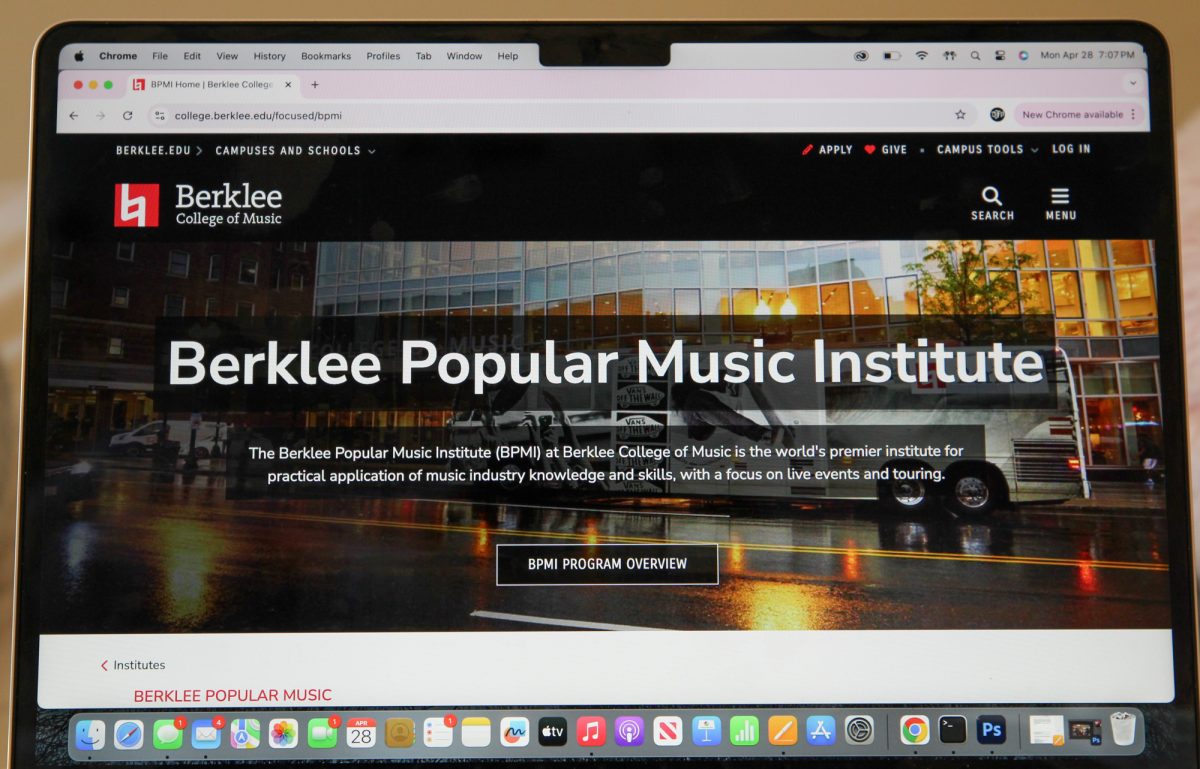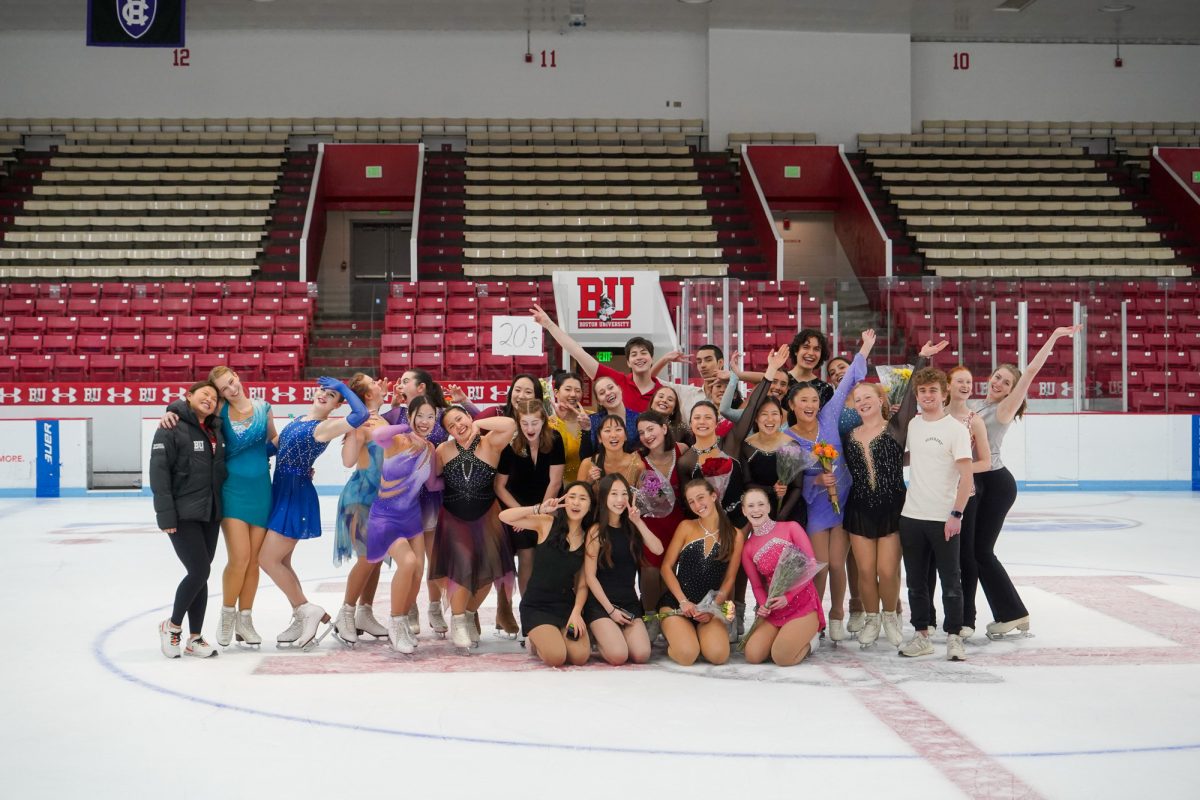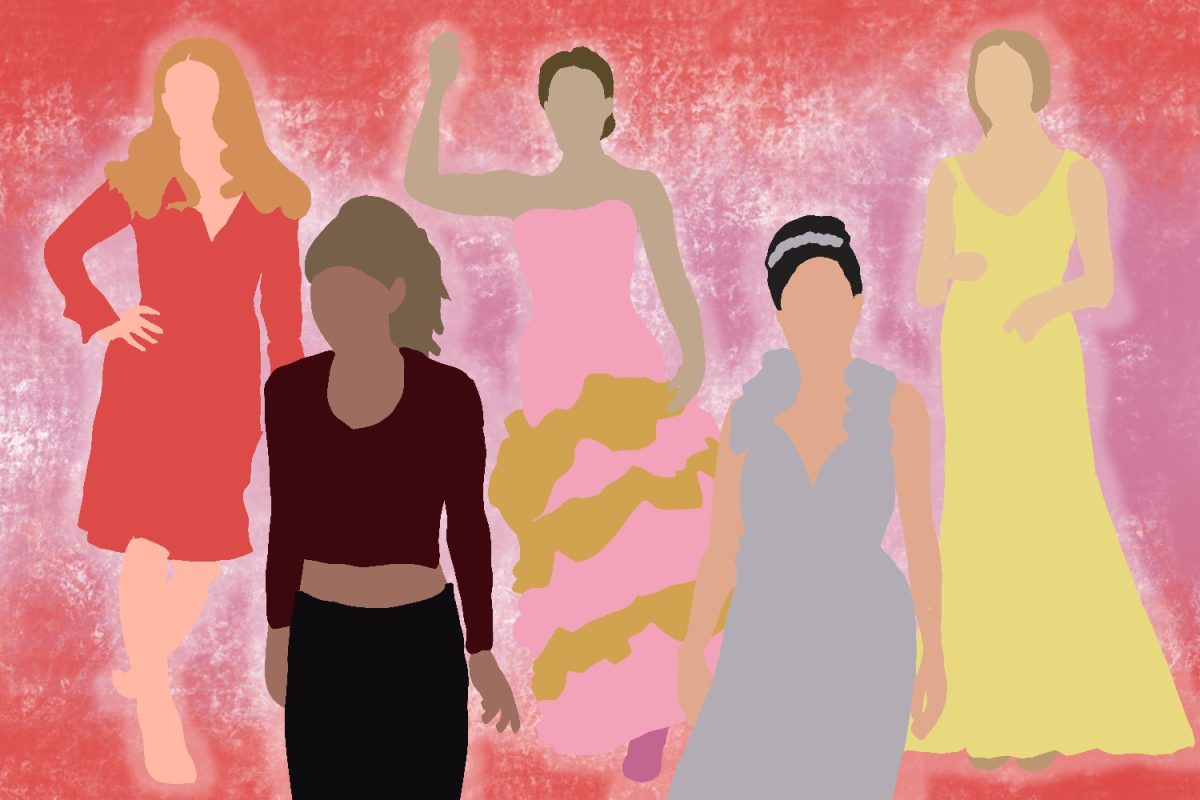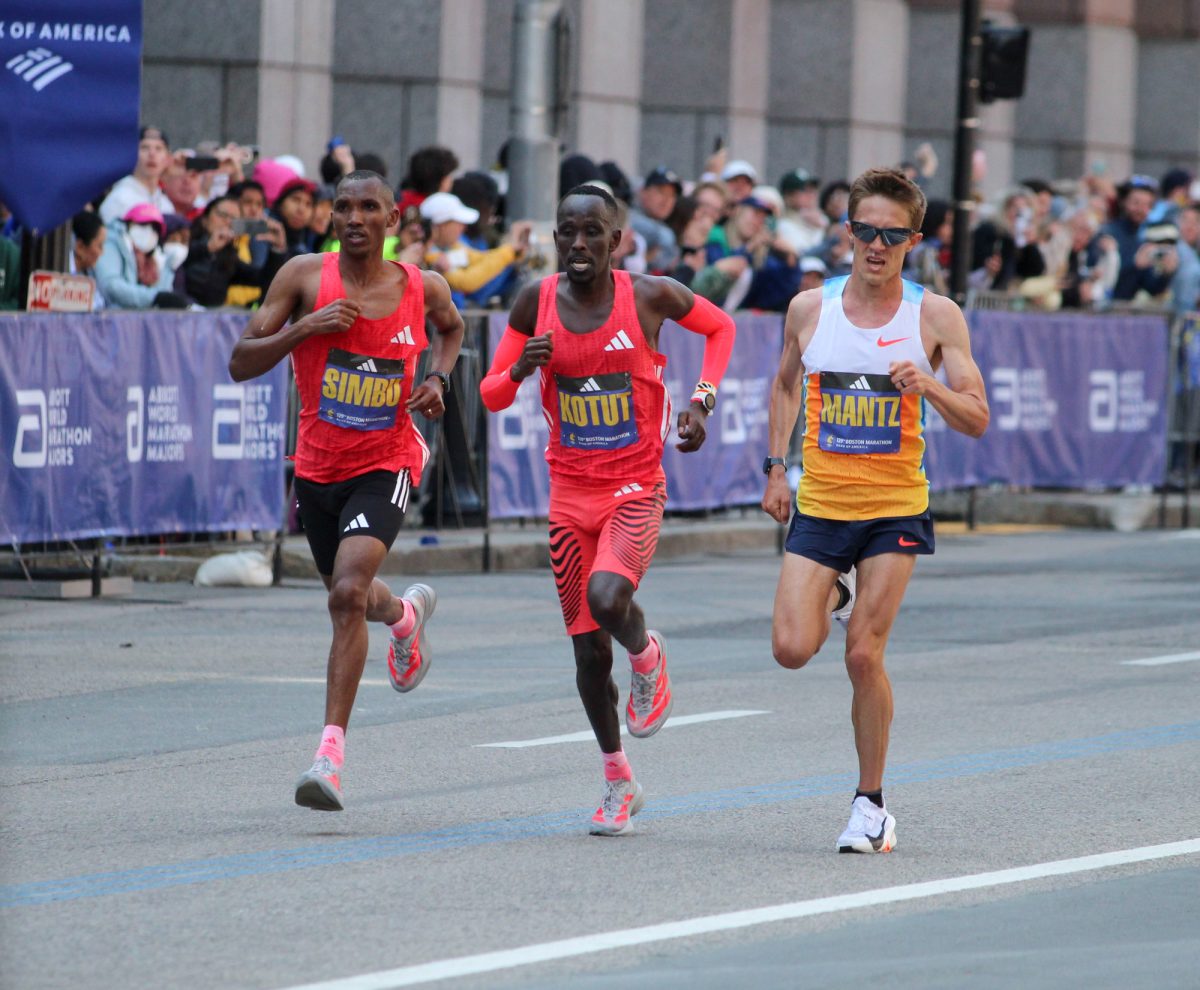It was standing room only at Bombay! Bombay! and many people had to be turned away at the door. More than 300 lucky fashion enthusiasts pressed their way into the ballroom at the luxury Liberty Hotel in Beacon Hill, hoping to catch a glimpse of Boston University graduate Sam Mendoza’s India-inspired line.
Mendoza, who graduated from the College of Communication last spring, began designing while he was still a student, but he never thought he would make it big in the notoriously competitive fashion industry.
“I sort of pretended to have a line, but it was always more of a joke than a plan,” Mendoza said.
The designer sported a plain, frayed shirt under a royal blue scarf. A white braided belt held up a pair of dress pants that he purposefully hemmed to expose his ankles. He described his own wardrobe as muted, but his creations are just the opposite.
This fall, he updated his Mexican peasant dress by replacing last season’s embroidered designs with spray painted versions.
For his latest collection, Mendoza drew on his vacation to India last winter. He brought back ideas and fabric instead of souvenirs.
“It was definitely not the Madonna tour, but I got some wonderful inspiration,” Mendoza said.
GOING AGAINST THE TREND
Those searching for Mendoza’s clothes in the new issue of Vogue or the big-name department stores will not find them. The only place that carries Mendoza’s designs is the store that helped him launch his line: Stil, on Newbury Street.
Mendoza applied for a job selling clothes at the boutique as a BU student, before he even considered his pieces a line at all.
“A girl I work with wore one of my dresses to a party with other people at Stil, and people liked it,” Mendoza said. “They asked me if they could carry my line, and then I freaked out because now I had to make the rest of the line.”
Stil is a tiny shop that carries unique pieces that few other stores are willing to take a risk on, Adam Beddie, who has worked at Stil for a year and a half, said.
“Sam’s clothes are very different, and that is important,” Beddie said. “In Boston, it is very tough to do wildly different things, because people are hesitant to try new things.”
Worldwide, the fashion industry has not suffered from consumer slowdown as much as other industries, The Independent (United Kingdom) reported. In an Aug. 28 article about a fashion retail company called Asos, The Independent said that the high-fashion business was still going strong and even posting large gains in some areas, while the rest of the economy was suffering.
Breaking into the industry — let alone succeeding in it — is challenging. “It’s like Heidi says: ‘One day you are in, the next you are out,'” Beddie said, referencing supermodel Heidi Klum’s famous line on the television series “Project Runway,” which features designers competing for fame and $100,000.
“You have to be consistently hot, and you really have to find your niche,” Beddie said. “Most big companies aren’t willing to take risks on new people, so you need to find what you are good at and work from there.”
WHAT MAKES A DRESS ‘APPROACHABLE?’
Mendoza’s success is unusual, and a large part of why he is thriving has to do with his realistic expectations, Beddie said.
“I’m not looking to take over the world,” Mendoza said. “I’m happy with the size of the line the way it is — it’s out there, and that is what is important.”
Mendoza keeps his line small partially because all his creations are handmade, and the individuality that handmade clothes offer is essential to his clothes’ growing popularity, he said.
“The only reason to charge a lot for an item is if it is either very well made or is unique,” Mendoza said. “My clothes aren’t very well made, but they are always unique.”
Mendoza charges between $400 to $600 for a dress from his fall collection and $200 to $400 from the spring collection. The prices are more in the fall because the autumn pieces are made from materials purchased in the countries that Mendoza visits to find inspiration, such as Mexico and India. In the spring, he uses local materials.
Though the prices seem steep, Mendoza explains that in high fashion, such prices are considered almost offensively low.
“I’ve had people yell at me, tell me to increase the price,” Mendoza said. “But I want my clothes to be approachable; I don’t want people to feel like they have to run away.”
When asked if college students form the base of his market, Mendoza said many young adults assume that because something is expensive, it must be stylish. Those students do not buy his line because they would rather spend large amounts of money on better-known designers. Instead, Mendoza’s target market is as unique as the clothes he makes.
“There are students who buy Sam’s line because they are innovators and want to try something new, but unfortunately, there are a lot of students who aren’t willing to take the risk, which is sad because the time before nine-to-five employment is the time to experiment with your look,” said Beddie.
For students on a budget who may see high fashion as unattainable, Mendoza had slightly backward advice.
“Don’t buy very much from stores like H ‘ M,” he said. “It is very easy to overspend on stuff that seems cheap, but then you have to keep buying new things. It makes more sense to buy just a few really good pieces that work for you.”
Mendoza understands young professionals who do not think they can afford designer clothing, because he is still one of them, as he continues to work at Stil behind the register.
“I never grew up with designer things,” he said. “I think I am still paying off the first pair of designer shoes I bought, like $125 from Calvin Klein.”
FROM COMM. AVE.
TO THE RUNWAY
While at BU, Mendoza joined the Fashion Retail Association, a Student Activities Office group that helps students interested in the industry get their start.
“I was secretary when I was a sophomore, president when I was a junior, and then my line exploded, so I became what they called the creative director – basically the fairy godmother to the group,” Mendoza said.
The FRA is a networking club and a place for students to show their own fashions. They have two fashion shows a year, showcasing student designs, and they offer networking trips to New York City every semester.
“We want to get our members involved with every aspect of the fashion industry: design, communications and marketing especially,” Daniela Meyer, FRA president, said. “This is not just a club for people who want to pat themselves on the back for dressing well.”
Meyer, a School of Management senior, estimates that there are close to 300 students in the FRA, mainly students from SMG and COM, because business and creativity are intertwined in the industry, Meyer said.
The FRA began in 2004, but this is the first year when former members, such as Mendoza, have been able to share stories of their successes in the industry and offer their expertise to current students. This year, the FRA will meet with executives from Nanette Lapore, Coach, Ralph Lauren and Cosmopolitan magazine, partially through the strength of alumni ties.
Mendoza fondly calls the FRA his “baby” and reminisces about the fashion shows he participated in, including one he dubbed his “first important show.” He had not finished the garments he planned to exhibit by the time the show started, so he had to pin up hems.
“There were people from Stil there, so I should have been prepared, but I wasn’t,” Mendoza said.
He certainly learned from that experience. At his latest show, every piece was flawless and the crowd was huge.
“I ate Indian food every night when I was working on the line, hoping it would make the line more Indian-y. It sounds a little out there, but that is what I did,” Mendoza said.

